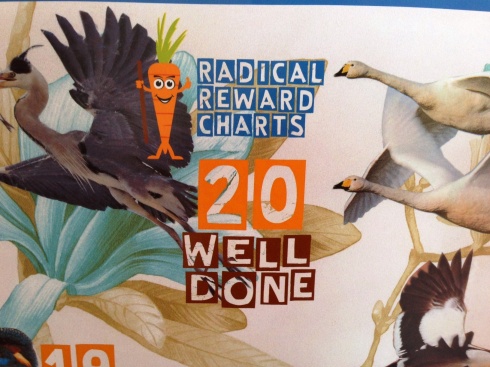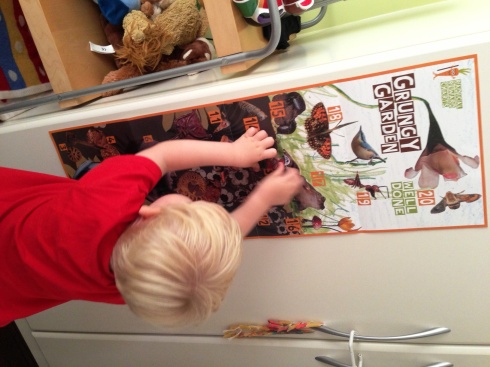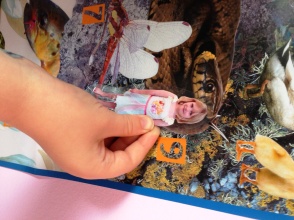After the baby years, there was I thinking I wouldn’t bother with any more parenting books. Despite my best intentions, I never got to the end of them and what I did read was 20% useful and 80% forgettable when faced with a bawling child. When I was asked to review Kids Don’t Come With A Manual: The Essential Guide To A Happy Family Life by Carole & Nadim Saad I expected it to join my other good intentions on the dusty pile under my bed. But I was surprised. It’s the first book focusing on children (rather than babies) that I’ve managed to read from cover to cover. More importantly, it’s one that I’ve been able to apply to my own daily battles with a 6-year-old and a 3-year-old, with – dare I say it and tempt fate? – a degree of success.
As the book proclaims: ‘Parenting is a Balancing Act!”. The book was driven by the authors trying to reconcile their opposing parenting styles. Throughout the book, both give their perspective on how taking a new approach has forced them to adjust their behaviour, reassuring you that no parent is perfect. But the book isn’t about how to fix your parenting differences with your partner. Its real focus is on providing balanced, practical tools to help you deal with the everyday challenges your children present you with, helping your children become happy and self-reliant adults and maintaining a good connection with them throughout their lives.
The authors’ objective was to “find practical, tried and tested evidence” for a balanced (and effective) style of parenting. That they have formulated their own approach by bringing together existing research and parenting books makes me less inclined to feel lectured at and more inclined to take on board their advice. Parents are sensitive types when our methods of parenting are called into question! The commonsense approach may on occasion make you feel you’re being told what you already know, but this is in fact reassuring – it confirms that good parenting isn’t rocket science. What I like about this book is that it’s very easy to remember the practical advice and then apply it in those moments of need when anything more than simple coping strategies would fly from your mind.
The initial chapters on ‘preventative tools’ are fascinating. They look at how to parent ‘pre-emptively’ rather than ‘reactively’. This lies in recognising that children’s behaviour demonstrates their desire to gain control over their lives and achieve a sense of belonging. Understanding why children act as they do and how important our reactions are can help nip difficult behaviour in the bud before it flares up, as well as build a more positive, nurturing environment. The ‘What a child may be thinking’ sections in the book force you to step into their shoes and shine a torch on your own behaviour – not always a comfortable experience but nonetheless an invaluable, mind-changing insight. “It can be difficult to accept and admit”, write the authors, “that despite all the love we have for our children, we may be exacerbating their ‘mis’behaviour through our own reactions.”
Whilst the authors recommend reading the chapters on ‘preventative’ tools first, this doesn’t stop it being a book you can dip into and still find useful. There are practical tools throughout for dealing with different challenges and, as the authors say, the “beauty of this is that even if you were to read and apply just one tool alone, in isolation, you would be very likely to experience a significant and positive difference”. The final part of the book deals with troubleshooting the ‘top 20 parenting challenges’ (eg, refusing to cooperate, whining, taking too long to do everything – sound familiar?) and is a quick reference to the best tools to use. I can see myself filling this section with post-its.
Truth is, we can read as much about parenting as we like but if we don’t find the advice easy to put into practice then we might as well never have picked up the book. Kids Don’t Come With A Manual has taught me new tricks for managing situations that would have previously resulted in me losing my cool and spiraling into the ugly vortex that is Parental Guilt. I knew that some of my ‘techniques’ were far from satisfactory but this book has given me a deeper understanding of why they were failing. This new insight has provided the kick up the backside that I needed. I can honestly say I feel a long way towards being a calmer parent. Of course, the tantrums haven’t disappeared completely nor has my children’s hearing improved significantly but I can deal with everything more effectively and with a renewed determination to remain calm. (And, yes, I’m feeling a little bit proud of myself!)
If kids did come with a manual then this book would probably be it.
Kids Don’t Come With A Manual: The Essential Guide To A Happy Family Life by Carole and Nadim Saad, Best of Parent Publishing, paperback, £12.99 (Kindle £6.99). For more information visit: www.bestofparenting.com/books.
WIN!
I’m giving away 3 copies of Kids Don’t Come With A Manual. For your chance to win one please enter below. Entries from the UK only. The closing date for entries is midnight on April 1st, 2015.
a Rafflecopter giveaway
//widget-prime.rafflecopter.com/launch.js












